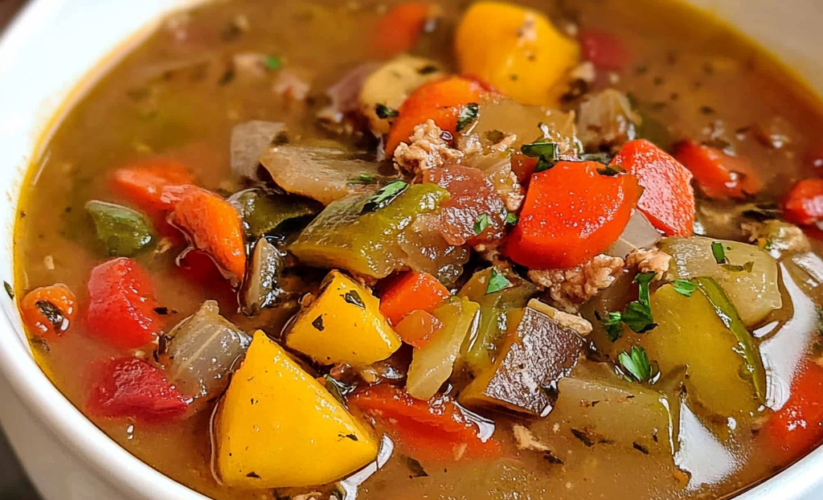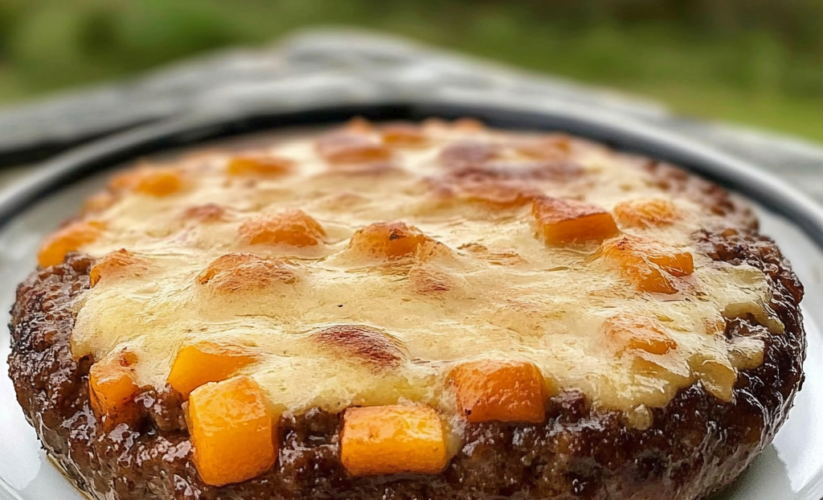
Roasted Vegetable Soup: A Comfort Classic Reimagined
In the realm of comfort food, few dishes can rival the wholesome satisfaction of a perfectly crafted roasted vegetable soup. This recipe elevates the humble vegetable soup by incorporating the deep, caramelized flavors that only roasting can provide, creating a luxuriously smooth and creamy final product that’s both nourishing and deeply satisfying.
The Magic of Roasting
Roasting vegetables before incorporating them into soup transforms their flavors through the Maillard reaction – the same chemical process that gives a perfectly seared steak its crust. This technique concentrates the vegetables’ natural sugars, creating deep caramelization that adds complexity and richness to the final soup. The dry heat of roasting also removes excess moisture, intensifying flavors in a way that simple boiling or sautéing cannot achieve.
Essential Ingredients
The Vegetable Base
- 2 medium carrots, roughly chopped
- 2 celery stalks, roughly chopped
- 1 large yellow onion, quartered
- 3 whole garlic cloves, peeled
- 2 medium Yukon Gold potatoes, cubed
- 2 red bell peppers, seeded and quartered
These vegetables form the foundation of our soup. The carrots provide natural sweetness, while celery adds a savory note. Onions and garlic contribute depth and complexity, potatoes add creaminess without requiring excessive dairy, and red peppers bring both color and a subtle sweetness.
The Aromatics and Liquids
- 2 tablespoons extra virgin olive oil
- 6 cups high-quality vegetable broth
- 1 cup heavy cream
- 1 teaspoon dried thyme
- 1/2 teaspoon smoked paprika
- 1 teaspoon kosher salt
- 1/2 teaspoon freshly ground black pepper
Quality ingredients make a difference here. Use a good olive oil for roasting and a well-flavored vegetable broth as your base. The smoked paprika adds an unexpected depth that complements the roasted vegetables perfectly.
The Art of Preparation
Roasting Process
- Begin by preheating your oven to 425°F (220°C). This high temperature is crucial for achieving proper caramelization.
- Prepare your vegetables thoughtfully – aim for roughly equal-sized pieces to ensure even cooking. Toss them with olive oil, salt, and pepper, ensuring each piece is well-coated.
- Arrange the vegetables on a large baking sheet in a single layer. Overcrowding will lead to steaming rather than roasting, so use two sheets if necessary.
- Roast for 35-40 minutes, stirring halfway through. Look for golden-brown edges and tender centers. The vegetables should be easily pierced with a fork but not mushy.
Creating the Soup
- Transfer the roasted vegetables to a large pot. Add the vegetable broth, thyme, and smoked paprika.
- Simmer for 15 minutes to allow the flavors to meld and the vegetables to soften completely.
- Use an immersion blender to puree until smooth. If using a standard blender, work in batches and be careful with the hot liquid.
- Stir in the heavy cream and heat through gently. Avoid boiling after adding cream to prevent curdling.
- Taste and adjust seasonings. The soup should be well-seasoned but not salty, allowing the roasted vegetable flavors to shine.
Serving Suggestions and Garnishes
The presentation of your soup can elevate it from a simple weeknight meal to an elegant first course. Consider these garnishing options:
- Homemade croutons made from artisanal bread
- A drizzle of high-quality extra virgin olive oil
- Fresh herbs such as chives, parsley, or thyme
- A swirl of cream or crème fraîche
- Toasted pumpkin seeds for crunch
- A light dusting of smoked paprika

Storage and Make-Ahead Tips
This soup actually improves with time as the flavors continue to develop. Store in an airtight container:
- Refrigerate for up to 4 days
- Freeze for up to 3 months (without cream)
- When freezing, add cream after reheating
Variations and Adaptations
Seasonal Adjustments
- Spring: Add asparagus and leeks
- Summer: Incorporate zucchini and yellow squash
- Fall: Include butternut squash and parsnips
- Winter: Add root vegetables like turnips and rutabaga
Dietary Modifications
- Vegan: Replace heavy cream with coconut cream or cashew cream
- Lower-fat: Use half-and-half or whole milk instead of cream
- Gluten-free: Already naturally gluten-free, just ensure your broth is certified
- Lower-carb: Reduce or eliminate potatoes, add cauliflower instead
Troubleshooting Tips
Common Issues and Solutions
- Too thick: Thin with additional warm broth
- Too thin: Simmer uncovered to reduce, or add a potato during cooking
- Grainy texture: Blend longer, or strain through a fine-mesh sieve
- Lacking flavor: Add more salt gradually, or increase roasting time for more caramelization
The Health Benefits
This soup isn’t just delicious – it’s also nutritious. The combination of vegetables provides:
- Essential vitamins and minerals
- Dietary fiber
- Antioxidants from colorful vegetables
- Protein when served with appropriate garnishes
Final Notes
The success of this roasted vegetable soup lies in the attention to detail during the roasting process and the quality of ingredients used. Take your time with the roasting step – it’s the foundation of the soup’s flavor. Don’t rush the blending process either, as this determines the final texture.
Remember that this recipe is highly adaptable. Feel free to experiment with different vegetable combinations or seasoning profiles while maintaining the basic technique. The key is to keep the ratio of starchy to non-starchy vegetables similar to ensure proper texture in the final soup.



